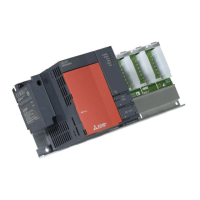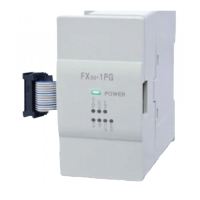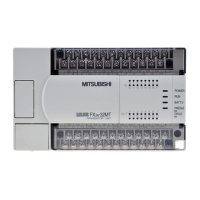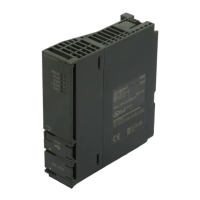3 - 11
Chapter 3 Specifications and Functions
3.2.4 QD77GF common functions
The outline of the functions executed as necessary is described below.
(Refer to "Section 2" for details on each function.)
Common functions Details
Reference
section
Parameter initialization function
This function returns the "parameters" stored in the buffer
memory/internal memory and flash ROM/internal memory
(nonvolatile) of Simple Motion module to the default values.
The following two methods can be used.
1) Method using sequence program
2) Method using GX Works2
14.2
Execution data backup function
This function stores the "setting data", currently being executed,
into the flash ROM/internal memory (nonvolatile).
1) Method using sequence program
2) Method using GX Works2
14.3
External signal selection function
This function selects from the following signals when using the
upper/lower limit signal and the proximity dog signal.
• External input signal of servo amplifier
• External input signal via CPU (buffer memory of QD77GF)
14.4
External I/O signal logic switching function
This function switches I/O signal logic according to externally
connected devices.
This function enables the use of the system that does not use b
(N.C.)-contact signals, such as Upper/lower limit signal, by
setting parameters to positive logic.
14.5
History monitor function
This function monitors errors, warnings, and start history of all
axes.
14.6
Virtual servo amplifier function
This function executes the operation as the axis (virtual servo
amplifier axis) that operates only command (instruction) virtually
without servo amplifiers.
14.7
Mark detection function
This function is used to latch any data at the input timing of the
mark detection signal (DI1 to DI4).
14.8
Module error collection function
This function collects errors occurred in the Simple Motion
module in the PLC CPU.
Holding the error contents in the PLC CPU, this function enables
to check the error history even after the PLC CPU in powered off
or reset.
14.9
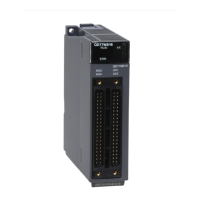
